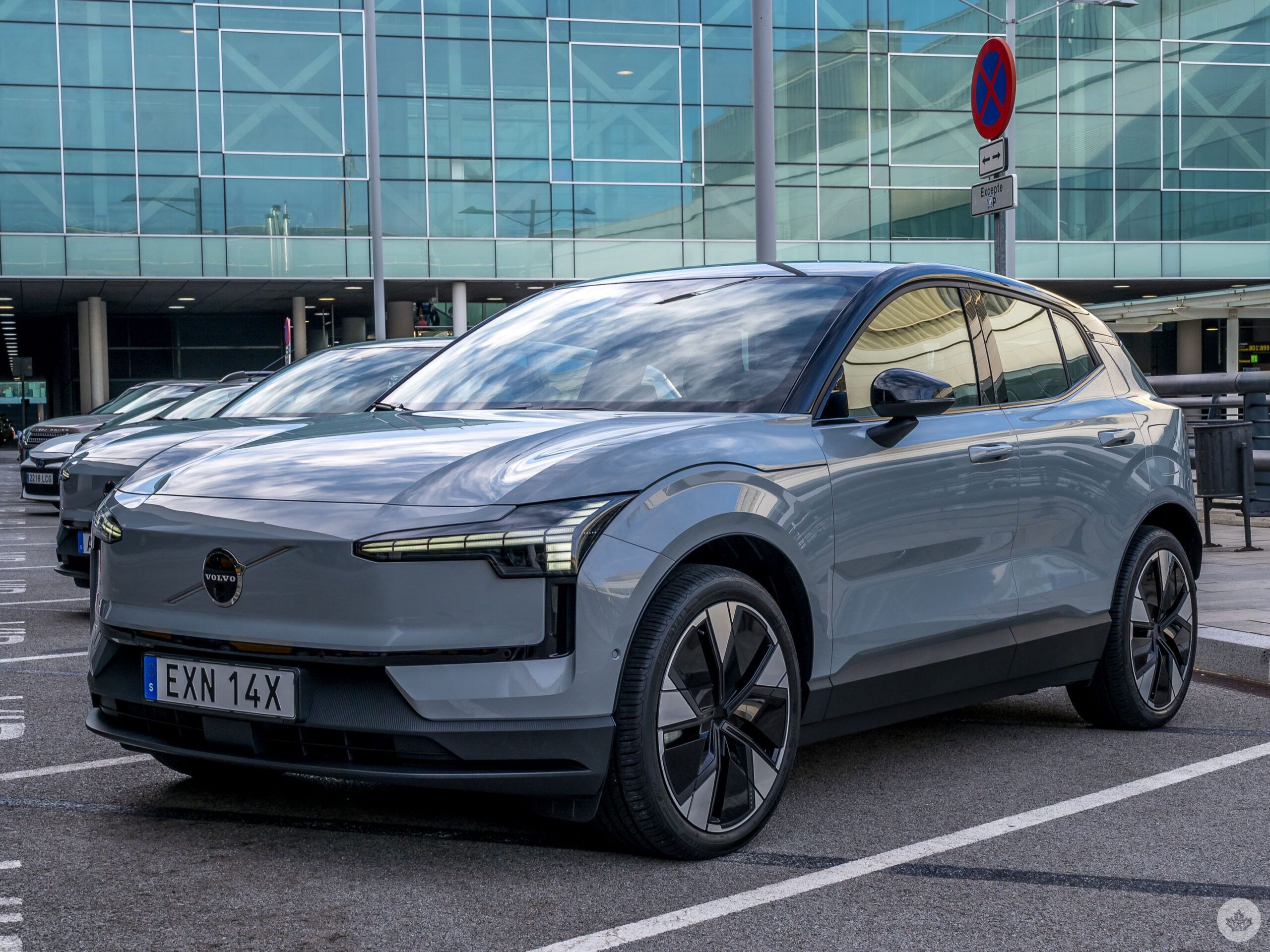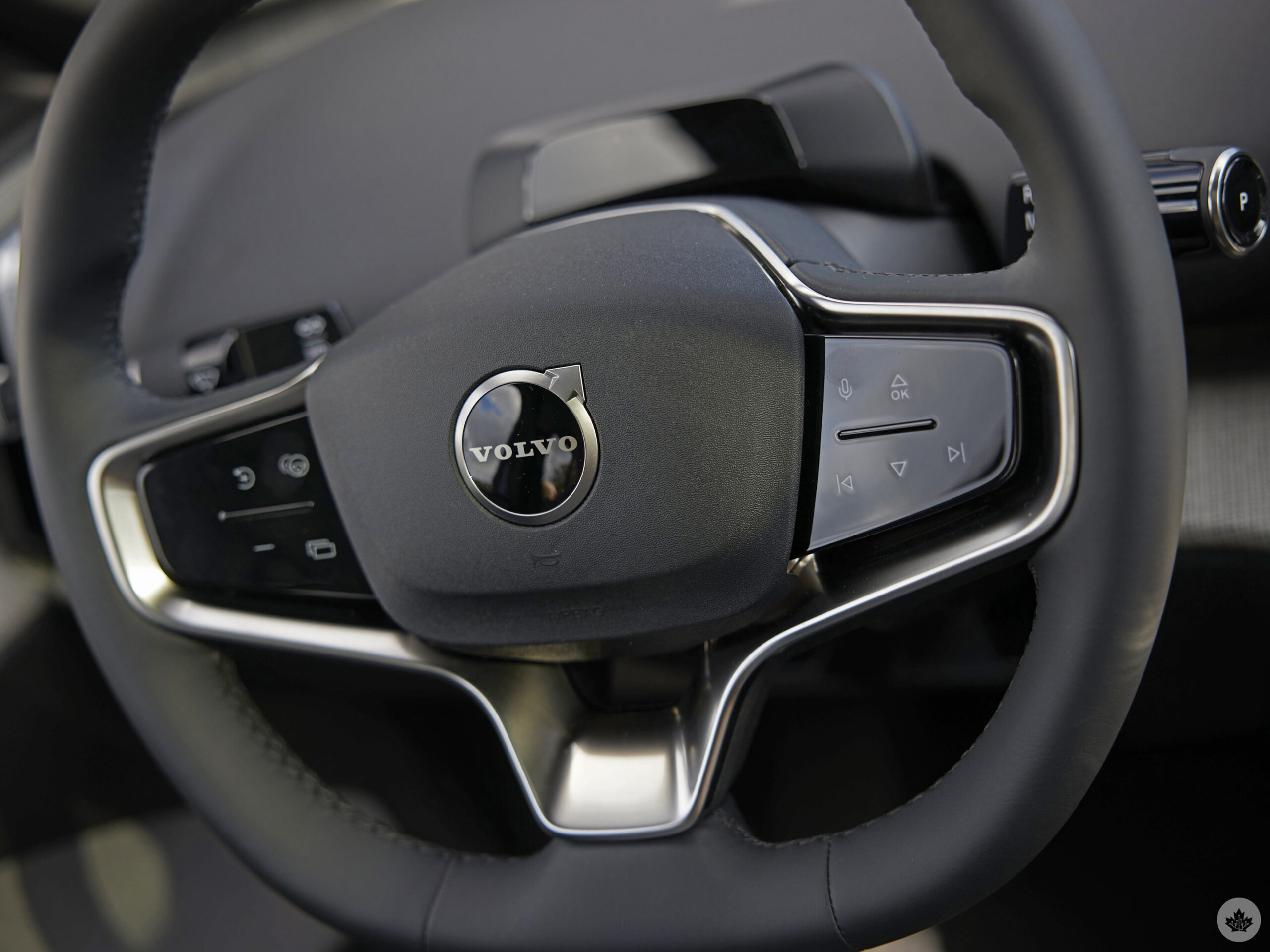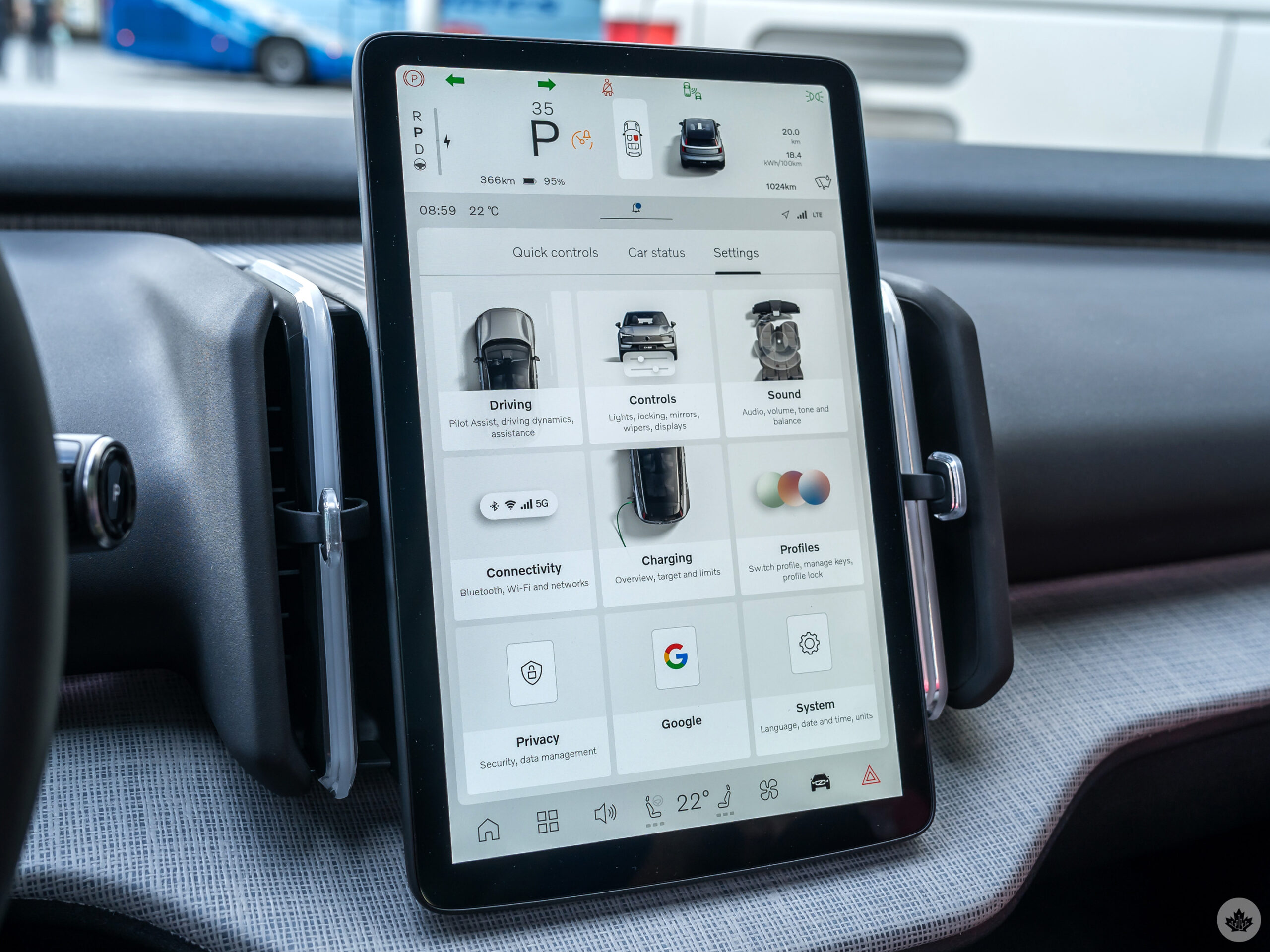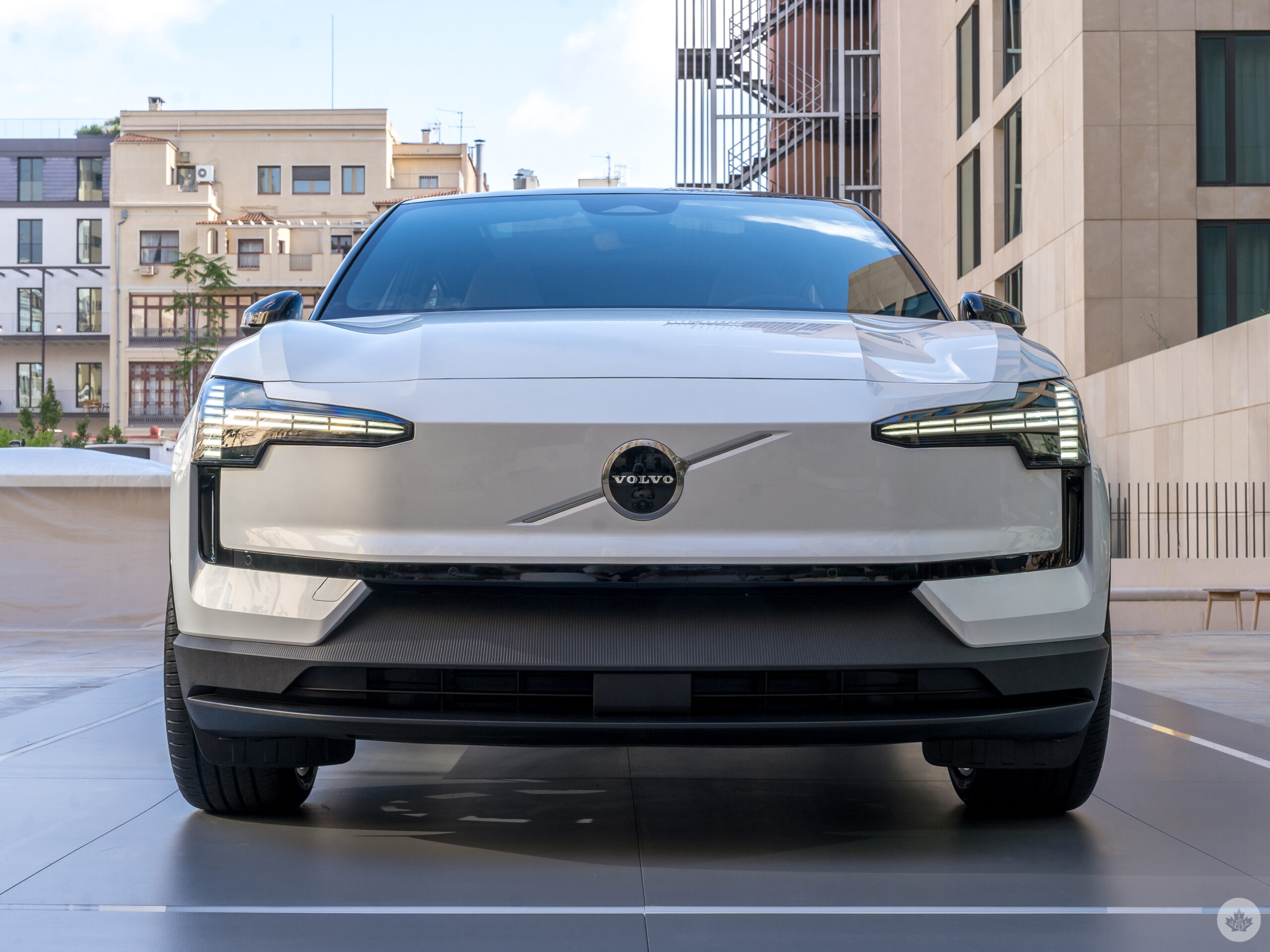Volvo is confident the EX30 will not just be a popular SUV for its own balance sheet, but also for anyone looking to drive an electric vehicle with minimalism and reliable performance in mind.
The EX30 is an interesting ride, not just because of decisions taken for the interior and cabin, but also for how they affect the overall driving experience. This is as close to Tesla as Volvo has gotten thus far, mainly because the 12.3-inch infotainment screen is the primary touchpoint for everything the vehicle does. Taking it for a test drive in Barcelona and surrounding regions within Catalonia in Spain makes a strong impression over what to expect from this ride.
Taking a seat
The EX30 may be Volvo’s smallest SUV to date, but it doesn’t feel claustrophobic at all, in part because it chopped and chiseled so much out of the interior to make room. I covered this in a previous hands-on with the vehicle, but getting to actually sit inside and hit the road, I could gauge comfort levels. Other than the handles to open the doors, they have little other functional value apart from the small storage space at the bottom. Lock, window and side mirror controls are either in the centre console or infotainment screen, and there are no built-in speakers, either.
The console itself also slides out to reveal cup holders. Keep those closed, and the front legroom feels almost cavernous, though you get additional storage and Qi wireless charging pads if you upgrade to the Plus or Ultra packages. The entire interior is covered in a blend of virgin and recycled materials that come in different combinations — what Volvo calls “rooms.”
An apt description when you consider the sound system is led by a soundbar nestled into the dash up front. The Core trim gives you a generic one, whereas the Plus and Ultra packages upgrade to one built and tuned by Harman/Kardon. It sounds better than I expected, almost like sitting in a home theatre room, only designed for a pod or closet, producing a clearer sound that you can also adjust to your liking through a basic EQ.
Marking the differences
I got to drive both the Single Motor Extended Range and Twin Motor Ultra trims. To recap, the Single Motor emulates a rear wheel drivetrain with a max range of 442 km, 268 horsepower, 253 lb-ft. of torque, and 0-100 km/h acceleration in 5.3 seconds. The Twin Motor can do all-wheel drive with a max range of 426 km, plus 422 horsepower, 400 lb-ft. of torque, and 100 km/h in just 3.6 seconds. All trims use the same 69 kWh battery.
 Heated seats and steering wheel are part of the Core package in Canada, whereas they’ll require an upgrade to Plus or Ultra in the United States. Otherwise, the breakdown between the packages lines up the same way, regardless of whether it’s the Single or Twin Motor models. Key ones are 19-inch wheels, storage space between the front seats, wireless charging and a digital key to use your phone instead. Like Tesla, the EX30 has an NFC key card that you can lay down on a slot or the wireless charging pad to essentially turn the car on. There’s no on/off button or switch because sensors in the cabin know when you’re sitting in the driver’s seat, thereby turning on the system. Once the card is in place, you can then put it in drive and take off.
Heated seats and steering wheel are part of the Core package in Canada, whereas they’ll require an upgrade to Plus or Ultra in the United States. Otherwise, the breakdown between the packages lines up the same way, regardless of whether it’s the Single or Twin Motor models. Key ones are 19-inch wheels, storage space between the front seats, wireless charging and a digital key to use your phone instead. Like Tesla, the EX30 has an NFC key card that you can lay down on a slot or the wireless charging pad to essentially turn the car on. There’s no on/off button or switch because sensors in the cabin know when you’re sitting in the driver’s seat, thereby turning on the system. Once the card is in place, you can then put it in drive and take off.
The look of the car may also change depending on the package. For instance, the rims will differ based on the size wheels you get, while the panoramic roof is also based on the upgrade you choose.
All eyes on screen
With no actual buttons or knobs on the dash — nor a cluster screen in front of the steering wheel — the 12.3-inch infotainment screen acts as the central point of contact for almost everything. Steering wheel buttons exist as shortcuts to certain features, but the most immediate change is that contextual information usually seen in a cluster is relegated to the main screen instead. That includes basics like speed, charge levels, drive mode, outdoor temperature and directions. There’s no HUD (heads-up display) either, so you’re always looking over to your right to know any of these details.
This kind of integration means the Google built-in infotainment system, which looks like an expanded Android Automotive platform, has to be more advanced and intuitive to accommodate all this at the same time. Vehicle settings all sit in menus within the interface, including those that would’ve otherwise been done with single buttons. For example, if you want to switch to Performance All Wheel Drive (AWD) mode to get the second motor going in the Twin trims, you have to toggle the feature on in the screen first.
 Even for tech-savvy users, getting into the EX30 for the first time is like unboxing a new tablet and finding a variety of settings to customize. Volvo’s safety reputation is going to be interesting that way, considering how important it is to know where everything is in the interface to minimize both the touch points and time to get to them. It’s not terribly difficult to navigate everything, but this one test drive wasn’t enough time for me to figure it all out.
Even for tech-savvy users, getting into the EX30 for the first time is like unboxing a new tablet and finding a variety of settings to customize. Volvo’s safety reputation is going to be interesting that way, considering how important it is to know where everything is in the interface to minimize both the touch points and time to get to them. It’s not terribly difficult to navigate everything, but this one test drive wasn’t enough time for me to figure it all out.
There is some personalization by way of individual profiles that will remember seat placement, side mirrors and things like that, making it easier to share the car. You need a Google account to use any apps and download others from the Play Store on the screen itself, though your phone supplies the data connection. Spotify and Google Maps worked perfectly fine during my drive, whereas Google Assistant wasn’t quite as polished owing to some software kinks that need to be worked out. The voice integration is going to be critical because many of the EX30’s own functions are supposed to be baked into the virtual assistant’s ability to automate hands-free. That way, you would be able to change the internal ambient lighting, for instance.

All in-car climate controls fall under a shortcut in the taskbar at the bottom of the screen, which adds at least one extra step to make adjustments on the fly. Volvo says just telling the voice assistant to do it will simplify that, though I think there’s something to be said for climate controls that are always available without tapping through different menus.
Despite the Google-heavy presence, wireless CarPlay comes standard, so cables aren’t necessary to run it from an iPhone. You could also choose to run Android Auto from your Android phone if you prefer to have that instead of the apps in the built-in Automotive platform instead.
Driving the EX30
The biggest adjustment is always looking over at the screen while driving. The EX30 isn’t novel in that approach (hello, Tesla), but it’s an entirely new concept for Volvo. An infrared camera above the steering wheel constantly scans for eyes looking straight ahead, and while it doesn’t issue any warnings until several seconds pass after averting your gaze, it’s one of the main reasons why knowing the interface is so vitally important.
Barcelona, and Catalonia at large, have speed traps and cameras, especially on highways, so I had to be mindful of how fast I was going along the way. In other vehicles, I’m accustomed to knowing my own speed and the road’s speed limit by simply glancing at the cluster or HUD. Always turning to look at the screen for that felt a little off. I get that drivers are supposed to technically do so for the rearview mirror anyway, but it feels weird having no contextual information within line of sight up ahead.
 The good thing is the drive itself is so easy to enjoy. The EX30 is a smooth ride by every measure, thanks to a lower centre of gravity due to its relative size and excellent suspension. With someone else driving, I could be inclined to pass out. The Twin Motor has superb pickup with its quick acceleration, though the Single Motor is also praiseworthy for its smooth and peppy performance. The Twin’s second motor kicks in during acceleration, regardless of whether AWD is on or not, adding a nice boost when passing someone or merging into traffic. Driver autonomy is limited, with Pilot Assist helping to change lanes.
The good thing is the drive itself is so easy to enjoy. The EX30 is a smooth ride by every measure, thanks to a lower centre of gravity due to its relative size and excellent suspension. With someone else driving, I could be inclined to pass out. The Twin Motor has superb pickup with its quick acceleration, though the Single Motor is also praiseworthy for its smooth and peppy performance. The Twin’s second motor kicks in during acceleration, regardless of whether AWD is on or not, adding a nice boost when passing someone or merging into traffic. Driver autonomy is limited, with Pilot Assist helping to change lanes.
The EX30 is deceptively small when you see it from the outside, but doesn’t feel cramped in the front or back once inside. Some may think it’s too small to appeal to North American drivers, but I disagree. Crossover SUVs are popular, and this one would fit right in for pretty much anyone in the driver’s seat, especially in larger urban centres where saving space matters. It’s smooth, quiet, responsive, spacious and offers pretty good range per charge. The tech side of things will be an adjustment for anyone who hasn’t been used to a single screen controlling everything.
 I didn’t get the chance to see the dedicated Volvo app that would work with the EX30, so can’t say much about what that’s like. The SUV will get over-the-air updates to squash bugs and add features, which could include the infotainment system itself.
I didn’t get the chance to see the dedicated Volvo app that would work with the EX30, so can’t say much about what that’s like. The SUV will get over-the-air updates to squash bugs and add features, which could include the infotainment system itself.
Coming in 2024, available now
The 2025 Volvo EX30 is available to reserve now, with pricing for the Single Motor trim with Core package starting at $53,700. The Plus package takes it to $56,900, while the Ultra will go for $59,100. The Twin Motor Core package will be $59,900 and the Ultra will raise that to $62,100.
All trims qualify for the federal government’s iZEV rebate program, and colour options remain the same: vapour grey, onyx black, moss yellow, cloud blue and crystal white.
